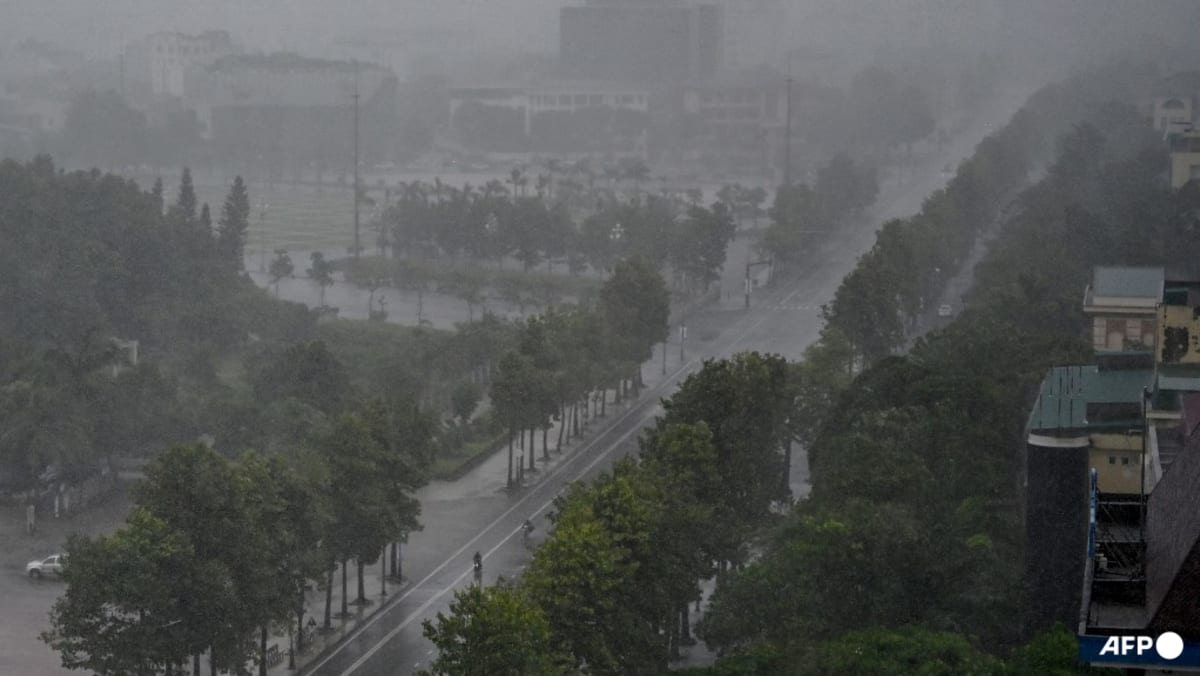Two airports in Thanh Hoa and Quang Binh provinces have been shut, according to the Civil Aviation Authority of Vietnam. Vietnam Airlines and Vietjet have cancelled dozens of flights to and from the area.
All fishing ships in the typhoon’s path have been called back to harbour.
“I have never heard of a typhoon of this big scale coming to our city,” said 66-year-old Le Manh Tung at a Vinh indoor sports stadium, where evacuated families dined on a simple breakfast of sticky rice.
“I am a bit scared, but then we have to accept it because it’s nature – we cannot do anything,” he told AFP, among only a few dozen people camped out at the evacuation site on Monday morning.
“NEVER THIS BIG”
Kajiki skirted the southern coast of China’s Hainan Island on Sunday as it moved toward Vietnam, forcing Sanya City on the island to close businesses and public transport.
Scientists say human-caused climate change is driving more intense and unpredictable weather patterns that can make destructive floods and storms more likely, particularly in the tropics.
“Normally we get storms and flooding, but never this big,” said 52-year-old evacuee Nguyen Thi Nhan.
The typhoon’s power is due to dramatically dissipate after it makes landfall.
In Vietnam, more than 100 people have been killed or left missing from natural disasters in the first seven months of 2025, according to the agriculture ministry.
Economic losses have been estimated at more than US$21 million.
Vietnam suffered US$3.3 billion in economic losses last September as a result of Typhoon Yagi, which swept across the country’s north and caused hundreds of fatalities.
